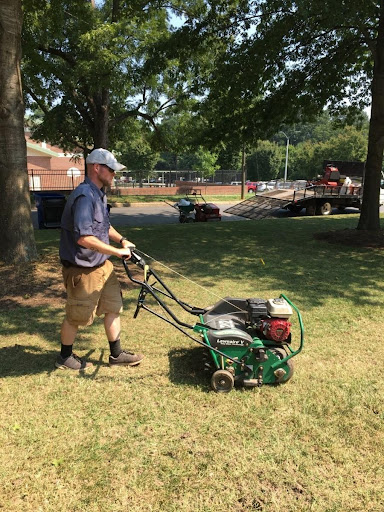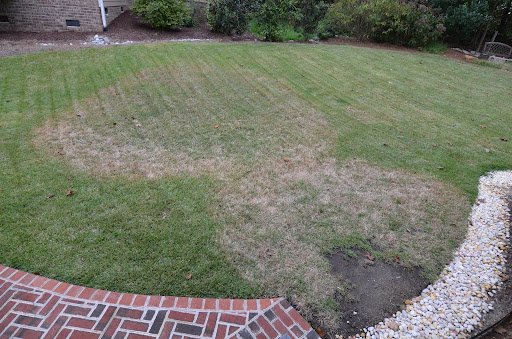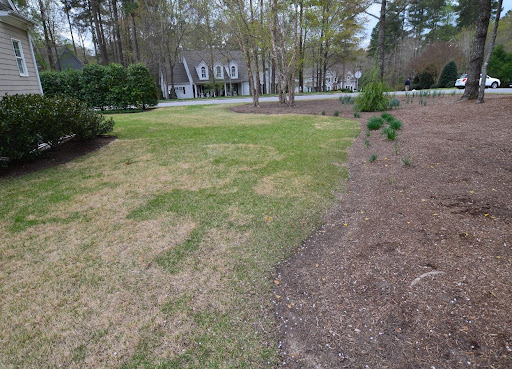Treat yourself to a better lawn with these tips

Fall growing conditions are ideal for giving your yard a brand-new look.
As existing fescue naturally declines due to changing air and ground temperatures, fescue seed is currently experiencing slow-to-no germination, primarily due to a lack of natural rainfall. As of writing this, we’ve only had two good watering events between September and October. Until there are adequate moisture levels, seeds will not germinate.
During this dry spell, light watering or irrigation cycles 3-4 times a day may be necessary for seed germination to start sooner (in-ground irrigation often produces slightly better results than above-ground sprinklers). In any case, seeds will continue to germinate through the fall, early winter and early spring, but it may be slow going. Applying more seed on top of seed that has not germinated yet will only waste it; you should only reseed in spots where it’s actually needed (e.g., if the weather has created bare spots in your yard).
The spring has a much higher potential for drought stress, fungal diseases and more that can inhibit growth and maturation. Additionally, pre-emergent weed control applications from late winter/spring have broken down by now. While this may mean more weeds now, those control measures can actually prevent successful seed germination, so it’s ultimately a good thing/another issue with springtime seeding.


Fairway Green’s hand-selected fescue seed mix, Southern Perfection, contains three turf-type tall fescues tested to be the best in the industry for strong, green growth:
These varieties were specifically chosen because they have the highest heat and drought tolerance/recovery, disease/insect resistance and color/texture quality. Backed by 0% weed and 0% crop contamination, Southern Perfection is WaterStar® qualified through the Turfgrass Water Conservation Alliance (TWCA) and carries a Blue Tag Certification that guarantees its purity.


Core aeration seeding is a common practice for seeding cool-season lawns in the fall, which Fairway Green is happy to offer. This process involves creating small holes in soil (done by removing thatch and soil) reducing compaction and helping prepare the seeding bed. This ensures the best seed-to-soil contact, which is crucial for good germination and lawn establishment.
Core aeration will also:
PLEASE NOTE: Due to factors beyond our control (watering, soil and climate conditions; adverse weather conditions; etc.) we cannot guarantee a stand of turf after seeding. We can guarantee, however, that Fairway Green will do the seeding job properly and use the best seed available on the market. If you have any concerns about services performed by us, you MUST contact us within three business days of when they were done.
Otherwise, success is in your hands! Watering is the key, but if you cannot water, just be patient. The seed will still germinate but it will take much longer.

While damage shouldn’t be severe, your yard is more susceptible to harm based on certain factors.
We have seen several cases in the past two weeks of fall armyworms laying eggs on structures like homes, trees and shrubs. Eggs hatch as larvae, drop to the ground and start feeding heavily on healthy, actively growing turf for about two to three weeks (which can go into November). North Carolina can see two to four generations of fall armyworms (it is thought that they do not survive winter months). For information on controlling them, read our blog.
We are now in the midst of the fall grub cycle—when white grubs can cause major damage if not caught early. White grubs are the larvae of scarab beetles, including southern and northern chafer beetles. Grubs are identifiable by their off-white colored bodies and off-brown hinds and heads. Grubs have six legs and measure from ¼ to 1½ inches. They are often seen in their C-shaped position in the soil
White grubs damage turf by eating through root systems. This is usually observed in late spring or fall as an off-color, wilting appearance on one’s lawn. As it’s commonly misdiagnosed as disease, heat or dry stress, you can confirm you’re dealing with white grub damage by:
To determine the extent of your grub activity and the need for control, you will need to use a spade to remove the upper 3 inches of soil in a 12” x 12” area. Then, cut back the turf sample to count the number of grubs and inspect root damage. If you see nine or more grubs, take immediate action utilizing proper products. We can also help develop a custom control plan.



Large patch fungus is a harmful disease for zoysia, Bermuda, centipede and St. Augustine turfs in the fall and early spring. Fairway Green is seeing more cases of this disease every year in our area. Damage occurs before you can even be aware of it and will not be visible until green-up in the spring.
Controlling large patch fungus requires two applications of preventative fungicide in fall and early spring (when ground temperatures are between 50 and 70 degrees). This is the only real way to handle the disease.